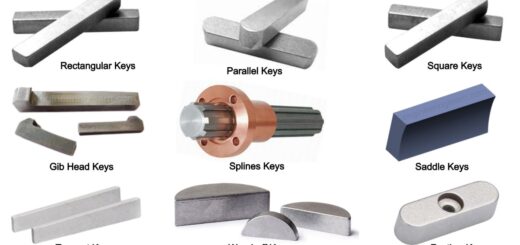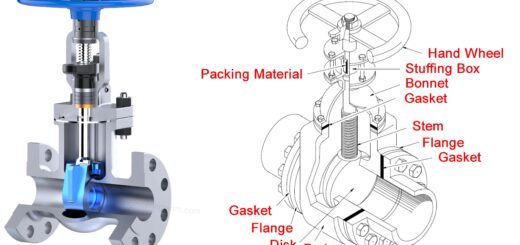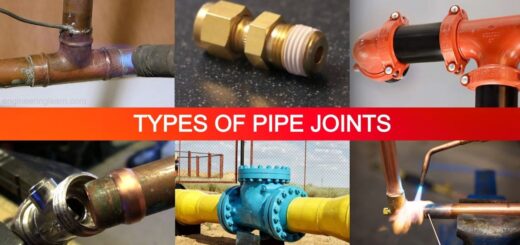17 Advantages of Steel and Their Uses in Construction – [Explained]
![17 Advantages of Steel and Their Uses in Construction - [Explained]](https://engineeringlearn.com/wp-content/uploads/2023/08/Advantages-of-Steel-1024x539.jpg)
Introduction
17 Advantages of Steel and Their Uses in Construction – [Explained]: – Steel is a critical part of producing vehicles, building structures, tools, and devices, and many more products, and is the most-used material in the world. Steel is strong, and recyclable, making it ideally suited for different applications. Steel can be produced in many forms, like sheets, plates, bars, and tubes, considering an extensive variety of design prospects. Besides the multitudinous technical applications for steel, architecture, and engineering stays a primary focus.
What is Steel?
Steel is presumably the oldest material utilized in construction since it comes from iron ore, which has been utilized for thousands of years. Steel is an iron alloy with delivered carbon to upgrade its energy and crack resistance contrasted with various kinds of iron. Steel is by a long shot the most significant, multi-functional, and generally versatile of materials. The development of mankind would have been inconceivable but for steel. The backbone and foundation of developed economies were laid on the strength and intrinsic purposes of steel. A wide range of elements can be gifted or delivered.
Steel has affected our lives, the vehicles we drive, the building structures we work in, the homes in which we live, and endless differences in the middle between them. Steel is used in building structures, infrastructure, tools, ships, trains, autos, machines, electric appliances, and so on in light of its excessive tensile and ductile energy and cost. Steel’s basis metallic is iron. The steel industry has grown into new advances and has strived hard to make the world’s strongest and generally versatile material far superior.
From manufacturing as well as assembling to home construction development, Structural steel is prominent wherever all over the world. Buildings, bridges, elevated buildings, shops, and warehouses all use structural steel sections. However as long we continue to reuse and recycle, steel is here to stay for long.
Advantages of Steel
Below, we will discuss the benefits of steel over different materials to exhibit why steel is essential with regard to building.
- Reliability
- Low Emissions
- High Strength and Light Weight Nature
- Industrial Behaviour
- Value and Looks
- Elasticity
- Uniformity, Durability & Performance
- Ductility and Warning Before Failure
- Addition to Existing Structures
- Lesser construction Time/More prominent Erection Speed
- Possible Reuse and Recycling
- Cost-effective
- Long Span Construction
- Temporary Constructions
- Safety
- Steel is Available Everywhere
- Scrape Value
1. Reliability: ( Advantages of Steel )
Steel systems are completely reliable. The thought processes for this reliability contain consistency and uniformity in properties, higher extraordinary administration in light of the manufacturing facility, huge flexibility, versatility as well as elasticity. Assume exceptional specimens of a couple of kinds of metallic are examined inside the lab for yield stress, final strengths, and extensions. All things considered, the variation is a lot lesser than various substances like cement and wood.
Furthermore, because of a homogeneous and elastic material, metallic fulfills the maximum of the assumptions concerned with the derivation of the assessment and layout formation, and the results acquired and dependable. This will be different in concrete systems because of heterogeneous material, cracking, and non-linearity of the stress-stress relationship.
2. Low Emissions: ( Advantages of Steel )
Energy efficiency or productivity implies that steel effectively participates in contributing to a low-carbon future by decreasing general CO2 emissions. Making strides toward environmental friendliness isn’t just really great for the climate yet additionally helps in building a strong image for an organization and helps in tax derivations also.
3. High Strength and Light Weight Nature: ( Advantages of Steel )
With the excessive and exorbitant electricity of metallic, as indicated by the unit weight method, the pointless masses can be smaller. It is to be referred to that futile masses are a larger part of the whole masses on the structure. At the point when the futile load decreases, the underneath contributors are in any case smaller due to considerably less weight performing on them. This is the truth of excellent significance for long-range bridges tall construction, and systems having terrible basic conditions.
It makes it great for structural applications and ensures that it is utilized in an extensive variety of projects. Even outrageous weather systems, for example, cyclones, tropical storms, and hail are typically unequipped for bringing down a steel structure. No other building material matches the steel resistance.
4. Industrial Behaviour: ( Advantages of Steel )
Rolled metal segments are synthetic in factories. The handiest turning into a member from those added substances is completed on the web site by placing in bolts or rivets and welding distinct added substances. In some cases elements of the shape likewise are assembled with-inside the factories or processing plants, hence, there might be an extraordinary version of prefabrication. Manual errors diminish considerably in such cases, the production speed or velocity will increment, and the whole expense will be decreased. Additionally, the quantity of people can be diminished and organized for factory meetings.
5. Value and Looks: ( Advantages of Steel )
An ever-increasing number of modern-day architects are praising the natural magnificence and elegance of steel buildings. In its development, structural steel endures dramatic bends and rolling to create non-linear patterns that further improve the aesthetic appeal or allure of a structure, all without sacrificing or forfeiting resilience and value. This technique of production generates new and innovative completions that different materials can’t replicate.
6. Elasticity: ( Advantages of Steel )
The steel acts towards layout assumption than the maximum of the opposite material as it follows Hooke’s guideline as much as much as pretty excessive stresses. At the point when a force is applied to steel it is deformed however it quickly recaptures its original shape within a fraction of seconds.
The metal segments as of now do not crack or tear sooner than the last load, so the moments of inertia of a metal shape might be determined. The moments of inertia procured for a strengthened concrete shape are on the other hand indefinite.
7. Uniformity, Durability & Performance: ( Advantages of Steel )
Steel is a homogeneous and uniform material. Subsequently, it satisfies the basic assumptions of a maximum of the evaluation and layout equations. In the event that if they are well maintained through painting, and so forth, the homes of metal never again extrude notably with time, though the homes of concrete in a strengthened substantial shape significantly and fundamentally changed with time.
Thus, metal systems are more durable. Steel is incredibly strong and durable. It is exceptionally resistant to corrosion and can keep going for a really long time in the right conditions. Steel is additionally fire-resistant and won’t spoil or decay like different materials.
8. Ductility and Warning Before Failure: ( Advantages of Steel )
The Property of a material that can resist big deformation without failure underneath excessive tensile stresses is stated to be its flexibility. Mild metal is a totally flexible material. The percentage prolongation of a widespread anxiety check specimen after fracture might be basically as high as 25 to 30%. This offers seen deflections of proof of approaching imminent failure in the event of over-burdens. Regardless of whether disintegration happens, time is to be had for occupants to empty the building.
Excessive pressure concentrations increment at various points in structural contributors underneath everyday hundreds. The malleable nature of the standard structural metal permits them to yield locally at the one’s point, reallocating the stresses and halting untimely failures.
9. Addition to Existing Structures: ( Advantages of Steel )
Increments or addition to current metallic systems are extremely smooth to make. Connections or associations among new and current systems might be hired in an effective manner. New bays or perhaps completely new wings can be delivered or conveyed to the current metallic bodybuilding, and metallic brides can likewise consistently be widened or enlarged.
10. Lesser construction Time/More prominent Erection Speed: ( Advantages of Steel )
Due to the economic nature of metallic constructional development, the progress of the paintings is quick, making the systems economical and affordable. The reason is that those systems might be placed to apply earlier. The discount or rebate in difficult work price and above-head adjustments as well as the benefits received from the early utilization of the constructional development adds to the economy.
11. Possible Reuse and Recycling: ( Advantages of Steel )
Steel segments can be reused after a shape is disassembled or dismantled. Steel is an iron alloy, meaning it is comprised of a combination of metals and non-metals including carbon, iron, and tin. If we talk about other metals, that includes aluminum, copper, steel can be consistently and reliably be reused or recycled for all intents and practically no damage to its properties.
Steel reusing requires less effort and exertion than mining raw materials since it is easily separated from different materials by taking advantage of its magnetic properties. Pre and post-consumer waste gives up steel quickly and effectively, permitting it to be diverted once again into production.
12. Cost-effective: ( Advantages of Steel )
Steel is much more cost-effective than other materials. It is less expensive to manufacture than different materials, and on the grounds that it is so durable, it won’t need to be replaced. Because of the reliable and solid strength of steel, any structural design is durable and requires less raw materials than different kinds of structures, like the concrete structure and wood construction. Steel buildings are expertly assembled structures that provide cost-effective and stable low-rise buildings.
13. Long Span Construction: ( Advantages of Steel )
High-thrust homes, extended or broadened lengthy bridges, and tall transmission towers are made utilizing structural metallic. Industrial homes with as much as a range of 90.m might be designed through plate rafters or trusses. The bridge ranges as much as 260.m are made with plate girders or supports. For through truss bridges, Bridge spans of 300.m were utilized.
14. Temporary Constructions: ( Advantages of Steel )
For brief systems, metallic production is continually preferred. Armed force buildings throughout battle are frequently constructed from temporary metallic. The systems can be disassembled or dismantled through the beginning not many bolts, and factor elements are carried to new areas are the shape is without issues reassembled.
15. Safety: ( Advantages of Steel )
Steel requires less maintenance, fundamentally in light of the fact that it goes through less wear and tear than other materials, and hence it’s safe to use. With up to 70% reduction in labor possible, utilizing a steel solution contrasted with other options, fewer individuals rise to a more secure construction site. Steel decking and integrated edge protection work with more secure working platforms.
16. Steel is Available Everywhere: ( Advantages of Steel )
Steel is an indispensable part of the economy promoting zero waste, reuse of resources and recycling, in this way helping build a sustainable future. Steel is the great partner, working together with any remaining materials to propel growth and development. Steel is wherever in our lives which is as it should be.
Not exclusively are pre-engineered parts, walls, and, surprisingly, whole designs accessible from different suppliers, but steel structures are likewise vastly customizable, considering speedy changes to designs and easy additions at whatever point the need emerges. Steel is utilized in each important and significant industry; energy, construction, car and transportation, infrastructure, and so on.
17. Scrape Value: ( Advantages of Steel )
One of the incredible selling points about steel and metal is its recyclability. It is the foundation or underpinning of the product’s sustainability. Steel can be recycled or reused again and again and never lose its physical properties. Steel has a scrap price, despite the fact that it isn’t generally reusable in its current form.
Conclusion
Steel is a versatile and flexible building material with various construction applications. Steel structures offer flexible dealing solutions that can improve architectural design during the creative process. Hybrid or Crossbreed constructions that incorporate different materials or building services open up new design prospects. The precise or exact execution provided by an elevated degree of pre-fabrication gives the designer with an extensive variety of design options. With steel construction, the costs and expenses of equipment, as well as, hoisting, are included in the raised expenses, and in this manner, no allowance has to be added.













